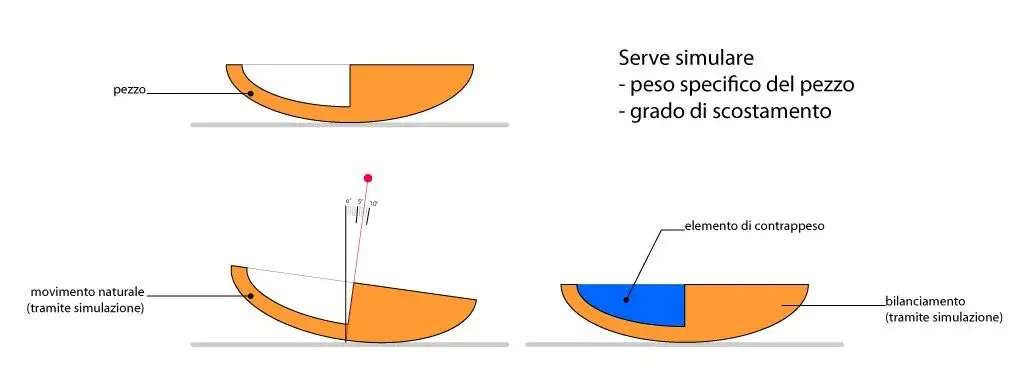I heard that sw is able to calculate such data and create motion simulation.
I attach a simple set with a model similar to that of your images. the "donder" and the counterweight are bound together but are completely free compared to the plan. if you start the simulation you will see that the models go to the unbalanced plane towards the counterweight, which I set with a specific weight 5 times that of the "donder" (I don't know how loop to call it that yellow thing:smile: )
If you change the specific weight of the counterweight and recalculate the simulation you will see that the orientation of the two united components changes.
similarly if you suspend the counterweight and recalculate the simulation the pendulum rests in tilted balance from the opposite side.
if you connect a sketch with reference odds you can also immediately view the modified corners. Alternatively, use the measuring instrument and control the corner.
I did it in 15 minutes, without the cinematic simulation module that I am convinced can also optimize everything according to project constraints.
is someone so kind to explain to me step by step how do you simulate the movement of the piece I attached?
I read that you can't use swx at all, so there's little to explain step by step. You need to get a good buzz and learn to use it
I need it for the thesis... please help me! ! !
to more reason you have to learn to use it. here you find all the help you want, but the abyc you have to put it on your own, that besides that of swx is very easy and of the help you have of advance.
Hi.
p.s I rocked with an ellipse seeds then I wanted to bind it tangent to the plan to start the simulation. I realized that the surface of the semiellisse cannot be used for any type of bond

It's weird. .

